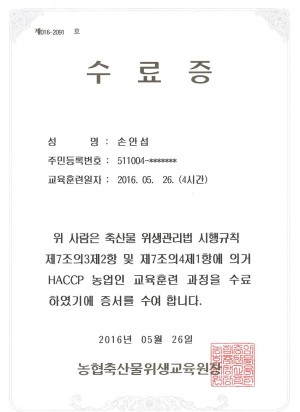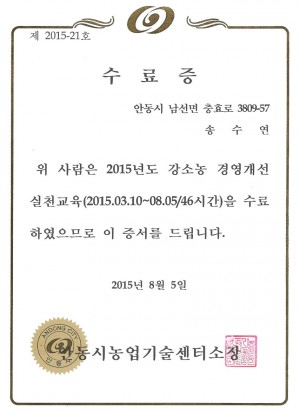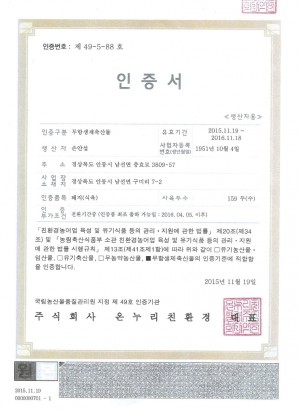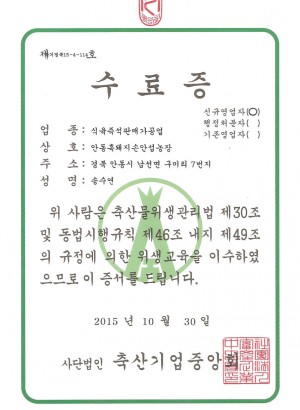[뒷다리살]Looking Into The Future: What Will The Adhd Assessment Adults Industry…
55
2023.03.05 03:23
짧은주소
본문
Methods of Assessment for Adult ADHD
There are many methods of assessment for adults with ADHD. There are many methods to test ADHD adults such as the MMPI-2RF test NAT EEG test and the Wender Utah Rating Scale. Each of these tests is utilized in various ways to determine the symptoms of ADHD.
MMPI-2-RF
The Minnesota Multiphasic Personality Inventory-2-Restructured Form (MMPI-2-RF) is a test that assesses adult ADHD symptoms. It can be utilized in a variety settings, including hospitals, correctional facilities and psychopathology clinics.
The MMPI-2RF is a scoring method and technical manual. It is intended to help adults with ADHD diagnose accurately and effectively.
The test was first developed in the 1930s, and has been altered numerous times to increase its accuracy. The test originally was a self-report questionnaire. But, it was discovered that it was not sufficiently transparent and the test's respondents could easily discern the test creator's intention. Therefore, in the 1970s the test was extended to include more clinical scales. In addition it was reorganized to accommodate more diverse cultural values.
The MMPI-2RF comprises 42 major scales. Each scale is composed of a set of questions designed to test the psychological state of a person. For instance, a test can measure a person's response to stress or a specific situation. Other tests can be used to determine if a symptom is an exaggerated appearance, if it occurs at a certain time of the week, or if it is absent entirely.
Symptom validity tests are used to identify deliberate over-reporting and deception. They also try to identify irregular or fixed responses. These tests are essential when using the MMPI-2RF test to assess adult ADHD.
While the tests for symptom validity are useful in assessing the validity as well as reliability of the MMPI-2RF several studies have proven that they aren't able to provide enough accuracy to classify. Numerous studies have found that private Adhd adult assessment symptoms and ACI are not linked in any way.
The research involved a group of patients who reported self-reported ADHD symptoms and were given the CAT-A as well as the MMPI-2RF. The results were then compared against a non-credible ADHD study group.
A small sample size didn't permit a significant difference in the results between the two groups. A comparison of the comorbid classes of psychiatric disorders did not show any significant increase in the baseline rates of comorbid psychiatric diagnoses in the inattentive group.
Early studies of the CII revealed that it was more susceptible to feigned or fake ADHD. However, these findings were restricted to a subset of patients who over-reported.
Wender Utah ADHD Rating Scale
The Wender Utah Rating Scale is a self-report tool that can be used to evaluate adult ADHD. The scale is used to measure the symptoms of adult ADHD that include hyperactivity inattention, difficulty unwinding, and poor social skills. It has high diagnostic and predictive properties in addition to high test-retest reliability.
Ward, Wender and Reimherr conducted a study in 1993 which resulted in the creation of the WURS. Their aim was to create tests to determine whether ADHD could be an indication of dysfunctional personality traits.
Since then, more than 30 papers have been published on the psychometrics of the WURS. Numerous studies have examined the scale's discriminant and predictive characteristics. The WURS has a significant discriminant power and Private adhd adult assessment many symptoms.
For example the WURS-25 score has correctly identified 96 healthy controls and 86% adults with ADHD. It also has internal consistency. This was demonstrated by studying the factor structure of this scale.
It is vital to take note that the WURS-25 self-report scale does not measure hyperactivity. There are many other scales, including the Brown ADD Rating Scale or the Connors adult adhd assessment online ADHD Rating Scale.
While the WURS-25 is a great choice for screening children it has been reported to misclassify half of the adult population. Therefore, it should be used with caution.
When conducting a clinical assessment it is crucial to take into consideration factors like age, gender and social contexts. If a patient scores more than four marks, additional investigation is necessary. A rating scale can be used to detect ADHD. However it should be conducted with a thorough interview. Interviews may include a checklist of comorbid conditions, functional disability measures, or private adhd adult assessment psychopathological syndrome scores.
To evaluate the discriminant as well as predictive characteristics of the WURS-25 two analyses were carried out. The varimax rotation method was employed to determine the number of factors. Another method was by calculating the area under the curve. In comparison to the WURS-25, the WURS-25 has specific structure of factors.
Neuropsychiatric EEG-Based Assessment Aid (NEBAS) System
A Neuropsychiatric EEG-Based Assessment Aid (NEBAS) System for adult ADHD assessment can make a difference in diagnosing and treating this neurodevelopmental disorder. It is a diagnostic tool that employs an electroencephalogram (EEG) to measure the beta/theta ratio (TBR) and help interpret the results. The NEBA is approved by the FDA and recommended for those who are between the ages of six and seventeen years old.
As part of the examination an expert will conduct an extensive examination that includes psychological and physical tests. To determine the patient's situation, they'll employ various scales of symptom severity and other diagnostic tests.
In addition to its medical applications, quantitative EEG is extensively used in psychiatry for treatment of various mental disorders. One of the benefits of this method of measurement is that it does not expose the patient to radiation.
Its diagnostic power is limited by its inability to interpret and the lack of reproducible evidence. A NEBA report can confirm a diagnosis or suggest additional tests to improve treatment.
Similar to fMRI, images that have clearly visible features are easily applied. It requires little effort from the patient. Wearable devices, however, offer an unprecedented access to the data of your body. This article reviews the software and hardware that are required to create and implement a successful NEBA.
There are numerous other methods to diagnose and treat ADHD. However, it's difficult to diagnose ADHD by using EEG. Researchers have been looking into new methods to measure EEG that could aid in diagnosing and treating this condition more accurately and effectively.
There are currently no SoCs (systems-on-chip) which can diagnose ADHD. While this is the case in the near future, the combination of current and future developments in the field has led to the need for the development of a solution.
Systems-on chips are an essential part of the advancement of EEG therapeutic systems. They are small and compact which means they can be integrated into mobile or wearable devices. Moreover, the development of wearable devices could allow access to huge amounts of information that can be used to enhance therapy.
A wearable device as well as the NEBA can be used to monitor mental health and other aspects of your life. These devices can be powered by batteries, which allows them to be a mobile solution.
Test the NAT EEG
The Neuropsychiatric Electroencephalograph-Based ADHD Assessment Aid (NEBA) is an FDA approved electroencephalograph-based tool for diagnosing adults with ADHD. It is utilized in conjunction with the evaluation of a clinical psychologist. A NEBA report provides a doctor with an assessment and provides recommendations for further testing.
In young adults suffering from ADHD the power decreases is observed in the alpha band and the power increases in the slow oscillatory frequency band. This suggests that ADHD traits are a result of a temporal component.
Previous studies have shown that ADHD children and adolescents have high power in the beta and theta bands. However, it's not known whether ADHD adults share the same physiological characteristics. A study of the power spectrums of EEG between ADHD adults and healthy controls was conducted.
For each frequency band, relative power was calculated for both eyes-closed or eyes-open conditions. A modified method of thompson-tau was applied to examine possible outliers.
In spite of the specifics of the ADHD regardless of the specific nature of the disorder, the study shows that adults with the disorder exhibit a distinct behavior-related presentation. Although the study does not prove a causal link between ADHD and behavior, the findings back Dr. Rosemary Tannock's Canada Research Chair in Adult ADHD.
Occipital electrodes showed less variability in the fast oscillatory band. The central electrode showed less variation in this band. These results suggest that a major part of the difference in the power of oscillation between ADHD and the control group is caused by the reduced power in the alpha band.
In adulthood, theta/beta and theta/alpha ratio showed stronger distinctions between groups than those in the younger group. The higher theta/beta proportion was indicative of a positive connection with adult ADHD.
The Canadian Institutes of Health Research supported the results of the study. However, further research is required to identify the pattern of development of these candidate biomarkers and to determine their diagnostic sensitivity.
ADHD is a delay in the development of neural systems. Some of the contributing factors to the clinical phenotypic presentation of ADHD are genetic, non-genetic and environmental. The extent to which these factors are the cause of the dominant clinical outcome of ADHD is unclear.
There are many methods of assessment for adults with ADHD. There are many methods to test ADHD adults such as the MMPI-2RF test NAT EEG test and the Wender Utah Rating Scale. Each of these tests is utilized in various ways to determine the symptoms of ADHD.
MMPI-2-RF
The Minnesota Multiphasic Personality Inventory-2-Restructured Form (MMPI-2-RF) is a test that assesses adult ADHD symptoms. It can be utilized in a variety settings, including hospitals, correctional facilities and psychopathology clinics.
The MMPI-2RF is a scoring method and technical manual. It is intended to help adults with ADHD diagnose accurately and effectively.
The test was first developed in the 1930s, and has been altered numerous times to increase its accuracy. The test originally was a self-report questionnaire. But, it was discovered that it was not sufficiently transparent and the test's respondents could easily discern the test creator's intention. Therefore, in the 1970s the test was extended to include more clinical scales. In addition it was reorganized to accommodate more diverse cultural values.
The MMPI-2RF comprises 42 major scales. Each scale is composed of a set of questions designed to test the psychological state of a person. For instance, a test can measure a person's response to stress or a specific situation. Other tests can be used to determine if a symptom is an exaggerated appearance, if it occurs at a certain time of the week, or if it is absent entirely.
Symptom validity tests are used to identify deliberate over-reporting and deception. They also try to identify irregular or fixed responses. These tests are essential when using the MMPI-2RF test to assess adult ADHD.
While the tests for symptom validity are useful in assessing the validity as well as reliability of the MMPI-2RF several studies have proven that they aren't able to provide enough accuracy to classify. Numerous studies have found that private Adhd adult assessment symptoms and ACI are not linked in any way.
The research involved a group of patients who reported self-reported ADHD symptoms and were given the CAT-A as well as the MMPI-2RF. The results were then compared against a non-credible ADHD study group.
A small sample size didn't permit a significant difference in the results between the two groups. A comparison of the comorbid classes of psychiatric disorders did not show any significant increase in the baseline rates of comorbid psychiatric diagnoses in the inattentive group.
Early studies of the CII revealed that it was more susceptible to feigned or fake ADHD. However, these findings were restricted to a subset of patients who over-reported.
Wender Utah ADHD Rating Scale
The Wender Utah Rating Scale is a self-report tool that can be used to evaluate adult ADHD. The scale is used to measure the symptoms of adult ADHD that include hyperactivity inattention, difficulty unwinding, and poor social skills. It has high diagnostic and predictive properties in addition to high test-retest reliability.
Ward, Wender and Reimherr conducted a study in 1993 which resulted in the creation of the WURS. Their aim was to create tests to determine whether ADHD could be an indication of dysfunctional personality traits.
Since then, more than 30 papers have been published on the psychometrics of the WURS. Numerous studies have examined the scale's discriminant and predictive characteristics. The WURS has a significant discriminant power and Private adhd adult assessment many symptoms.
For example the WURS-25 score has correctly identified 96 healthy controls and 86% adults with ADHD. It also has internal consistency. This was demonstrated by studying the factor structure of this scale.
It is vital to take note that the WURS-25 self-report scale does not measure hyperactivity. There are many other scales, including the Brown ADD Rating Scale or the Connors adult adhd assessment online ADHD Rating Scale.
While the WURS-25 is a great choice for screening children it has been reported to misclassify half of the adult population. Therefore, it should be used with caution.
When conducting a clinical assessment it is crucial to take into consideration factors like age, gender and social contexts. If a patient scores more than four marks, additional investigation is necessary. A rating scale can be used to detect ADHD. However it should be conducted with a thorough interview. Interviews may include a checklist of comorbid conditions, functional disability measures, or private adhd adult assessment psychopathological syndrome scores.
To evaluate the discriminant as well as predictive characteristics of the WURS-25 two analyses were carried out. The varimax rotation method was employed to determine the number of factors. Another method was by calculating the area under the curve. In comparison to the WURS-25, the WURS-25 has specific structure of factors.
Neuropsychiatric EEG-Based Assessment Aid (NEBAS) System
A Neuropsychiatric EEG-Based Assessment Aid (NEBAS) System for adult ADHD assessment can make a difference in diagnosing and treating this neurodevelopmental disorder. It is a diagnostic tool that employs an electroencephalogram (EEG) to measure the beta/theta ratio (TBR) and help interpret the results. The NEBA is approved by the FDA and recommended for those who are between the ages of six and seventeen years old.
As part of the examination an expert will conduct an extensive examination that includes psychological and physical tests. To determine the patient's situation, they'll employ various scales of symptom severity and other diagnostic tests.
In addition to its medical applications, quantitative EEG is extensively used in psychiatry for treatment of various mental disorders. One of the benefits of this method of measurement is that it does not expose the patient to radiation.
Its diagnostic power is limited by its inability to interpret and the lack of reproducible evidence. A NEBA report can confirm a diagnosis or suggest additional tests to improve treatment.
Similar to fMRI, images that have clearly visible features are easily applied. It requires little effort from the patient. Wearable devices, however, offer an unprecedented access to the data of your body. This article reviews the software and hardware that are required to create and implement a successful NEBA.
There are numerous other methods to diagnose and treat ADHD. However, it's difficult to diagnose ADHD by using EEG. Researchers have been looking into new methods to measure EEG that could aid in diagnosing and treating this condition more accurately and effectively.
There are currently no SoCs (systems-on-chip) which can diagnose ADHD. While this is the case in the near future, the combination of current and future developments in the field has led to the need for the development of a solution.
Systems-on chips are an essential part of the advancement of EEG therapeutic systems. They are small and compact which means they can be integrated into mobile or wearable devices. Moreover, the development of wearable devices could allow access to huge amounts of information that can be used to enhance therapy.
A wearable device as well as the NEBA can be used to monitor mental health and other aspects of your life. These devices can be powered by batteries, which allows them to be a mobile solution.
Test the NAT EEG
The Neuropsychiatric Electroencephalograph-Based ADHD Assessment Aid (NEBA) is an FDA approved electroencephalograph-based tool for diagnosing adults with ADHD. It is utilized in conjunction with the evaluation of a clinical psychologist. A NEBA report provides a doctor with an assessment and provides recommendations for further testing.
In young adults suffering from ADHD the power decreases is observed in the alpha band and the power increases in the slow oscillatory frequency band. This suggests that ADHD traits are a result of a temporal component.
Previous studies have shown that ADHD children and adolescents have high power in the beta and theta bands. However, it's not known whether ADHD adults share the same physiological characteristics. A study of the power spectrums of EEG between ADHD adults and healthy controls was conducted.
For each frequency band, relative power was calculated for both eyes-closed or eyes-open conditions. A modified method of thompson-tau was applied to examine possible outliers.
In spite of the specifics of the ADHD regardless of the specific nature of the disorder, the study shows that adults with the disorder exhibit a distinct behavior-related presentation. Although the study does not prove a causal link between ADHD and behavior, the findings back Dr. Rosemary Tannock's Canada Research Chair in Adult ADHD.
Occipital electrodes showed less variability in the fast oscillatory band. The central electrode showed less variation in this band. These results suggest that a major part of the difference in the power of oscillation between ADHD and the control group is caused by the reduced power in the alpha band.
In adulthood, theta/beta and theta/alpha ratio showed stronger distinctions between groups than those in the younger group. The higher theta/beta proportion was indicative of a positive connection with adult ADHD.
The Canadian Institutes of Health Research supported the results of the study. However, further research is required to identify the pattern of development of these candidate biomarkers and to determine their diagnostic sensitivity.
ADHD is a delay in the development of neural systems. Some of the contributing factors to the clinical phenotypic presentation of ADHD are genetic, non-genetic and environmental. The extent to which these factors are the cause of the dominant clinical outcome of ADHD is unclear.















댓글목록
등록된 댓글이 없습니다.